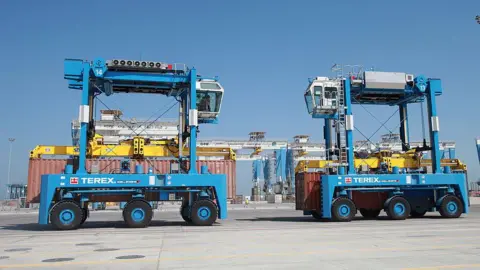Jobs
Terex: Manufacturing firm to cut about 100 jobs in Northern Ireland

By John Campbell, BBC News NI economics and business editor
 Getty Images
Getty ImagesAbout 100 jobs are at risk at the Northern Ireland operations of manufacturing firm Terex.
The United States company makes crushing and screening equipment used in industries like construction and mining.
It said an “extraordinary surge in demand” for its products in the aftermath of the coronavirus pandemic had now “stabilised”.
As a result of this reduced demand it has started a redundancy consultation and taken other cost cutting measures.
This includes including reducing overtime and travel as well as not filling some vacant posts.
‘Unsettling time’
A spokesperson for the company said they understood it was an “unsettling time” for employees.
“Our primary focus is to minimise job losses while managing these changes with transparency and respect for everyone involved,” the spokesperson said.
Terex is one of Northern Ireland’s largest manufacturing employers with about 2,000 people employed factories in Omagh, Dungannon, Ballymoney, Londonderry and Cookstown.
It also has a business services centre in Lurgan.
It’s understood the redundancies could affect all sites except Lurgan and will involve a mix of voluntary and compulsory redundancies
The company will not know the precise number of cuts until the redundancy consultation concludes.
 Getty Images
Getty ImagesOfficial figures suggest manufacturing has been the weakest part of the NI economy for much of the last two years.
In the first quarter of 2024, output across manufacturing fell by 0.4% over the quarter and was down by 3.7% compared to the same period in 2023.
Manufacturing output was flat for much of 2022 and has been falling since the start of 2023.
There is significant variation between manufacturing subsectors with some, such as transport equipment, growing strongly.
Some companies and manufacturing sectors experienced a boom during and in the aftermath of the pandemic but demand has since returned to more normal levels.
For example Randox, a diagnostics company, made total profits of £465m in 2021 and 2022.
Its most recent accounts for 2023 show it recorded a loss of just under £33m, with annual turnover down from £626m to £173m.










